Exclusive interview with West Side Story director Joshua Denning
MacTheatre’s leader discusses historic box office, supporting Puerto Rican relief efforts and joy, challenges of working with young, exuberant and huge cast
Director Joshua Denning reviews the dress rehearsal of Catch Me if You Can with the cast and crew on Sept. 27. Photo by Dave Winter,
February 8, 2018
The Shield: Is this the first time that this many tickets have been sold in the time you’ve taught here or in the history of the school?
Joshua Denning: I would say the whole school as far as we know because this is the largest theater the school has ever had. They started in the cafeteria, and then in [the Fine Arts Building Theater] and the [McCallum Arts Center] is almost twice the size of [the FABT]. I know there were sellouts in [the FABT] when they did Tommy, I think. That’s the last one I heard about, but this [show] is twice the size and double the amount of weekends.
TS: Have you been surprised about the ticket sales?
JD: I have been. I mean, it’s kind of the goal. You want the community to see how hard everyone has worked and to experience this art, so I feel really good that we achieved our goal and did something that people care about.
TS: Is a portion of the ticket sales still going to Puerto Rican relief?
JD: Yes. We are in contact with the district, because everything has to be approved by [them]. The last I heard we had found a fine arts cultural center over there that needed to rebuild, and I proposed that we send a portion to them, but in the last email I received from the district, they wanted something more national like a Puerto Rican national relief effort charity rather than a specific place or group getting the donation.
TS: There have been a few injuries during the show; what do you think is causing that? How has it been overcoming it?
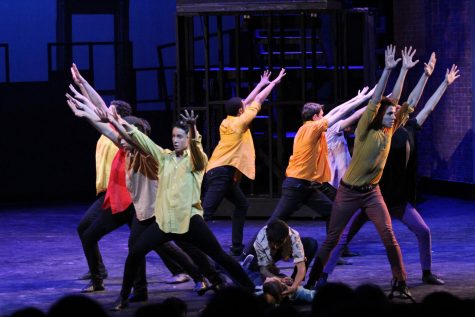
JD: It’s a lot of things, because we are doing the original staging for The Rumble, which is where some injuries have happened, and we have also had some happen backstage. So in terms of the show itself being injurious, there’s a lot of dancing that’s athletic in style, and these are young bodies that aren’t that strong yet. A lot of people think dancers work out to look better, more fit or slimmer, but the reason they work out is to be able to do things like West Side Story and not hurt themselves, so I hope our students are learning the importance of building that strength, because that’s what it takes. Also, what happens in the fight choreography is, again, these are young actors that don’t quite know yet how to regulate their intensity, so they’re doing things at full intensity, whereas when I teach the choreography I say to always do it at 75 percent, and that looks great in the audience, and everyone stays safe, but they go overboard. I appreciate the energy and commitment, but that is how people get injured.
TS: Is the whole show original choreography?
JD: For the dancing. West Side Story is one of those iconic shows. I’ve actually been in a production [of it] choreographed by the artistic director of Ballet Austin that was his own original choreograph. It’s a different feel. This show has the dances really integrated into the plot, and [it] helps the story moreso than usual, so we actually licensed and paid for the original choreography, and it came with the manual with all of these reference images and Jerome Robbins’ original notes. So we licensed it, and we had to adapt it in a few areas, not many, but just a few that were too technically challenging for our skill level; there were some really hard moments that we changed. In terms of the scenes, those are our own creation because they are based on our actors and our set, which is not the Broadway set.
TS: How hard has it been combining the original show with a your own vision?
JD: It hasn’t been. What has been really really cool is Arthur Laurents, who wrote the show originally in 1957 and wrote the screenplay for the 1961 film, directed the most recent revival on Broadway. The original productions were directed by Jerome Robbins, the choreographer, so it was very much his approach and style. This last revival on Broadway was the author of the play; he directed it. So if you look at that production, it is very different, and he brought out a lot of nuances in the script that make things more clear and sort of redefined a lot of the characters in a way, and that was the famous bilingual production where the Puerto Rican characters spoke in Spanish when they were alone or with other Puerto Rican characters, and when they were with Caucasian characters they spoke English. So to have that new take on it and to be able to reference that was really exciting for me, because it wasn’t the same old West Side Story that everyone has seen forever, and it does feel new and fresh. So we have gone more in that direction.
TS: Why did you chose to double cast Tony and Maria?
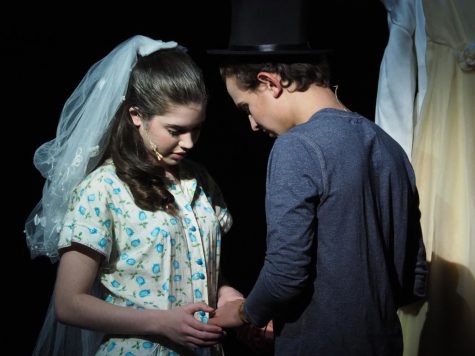
JD: So we had a set of juniors and a set of seniors, and each of those four actors had their strengths and weaknesses across the board, and when I looked at the strengths and weaknesses of all of them, they made sort of a balance. I was like, “I can’t really say that it should definitely be this actor over this one.” There was an evenness there, and us being a school and trying to give opportunity to as many kids as we can to grow, it just seemed like the right choice to double cast it instead of having some people not in the show at all that have amazing talent.
TS: This is a large cast; is this usually how big it is?
JD: It is. We always start with a cast this large. I remember, going to back to Les Mis, it was like 84, and Me and My Girl was 86, but somehow along the line when people see how much work it is and how much of a time commitment it is, they drop. In this one they stayed for the most part, and the people have been in it to win it, and it’s the largest cast.
TS: There are a lot of freshmen and sophomores in this cast; how has it been working with them?
JD: It is really cool. I didn’t realize it until I would look around in scenes and be like, “Oh, these are all freshmen and sophomores except for the two leads!” It’s really been a joy because I feel like they’re here because they’ve heard about McCallum and the program, and they want to be a part of it, and so it’s nice to have such fresh enthusiasm, openness and commitment to work with, whereas juniors and seniors are starting to think about life after high school–which is exactly what they should be thinking about–and their focus becomes a little split. They’ve got one foot here and one foot out the door, and that’s all fine and good, and I support that; it’s just different.



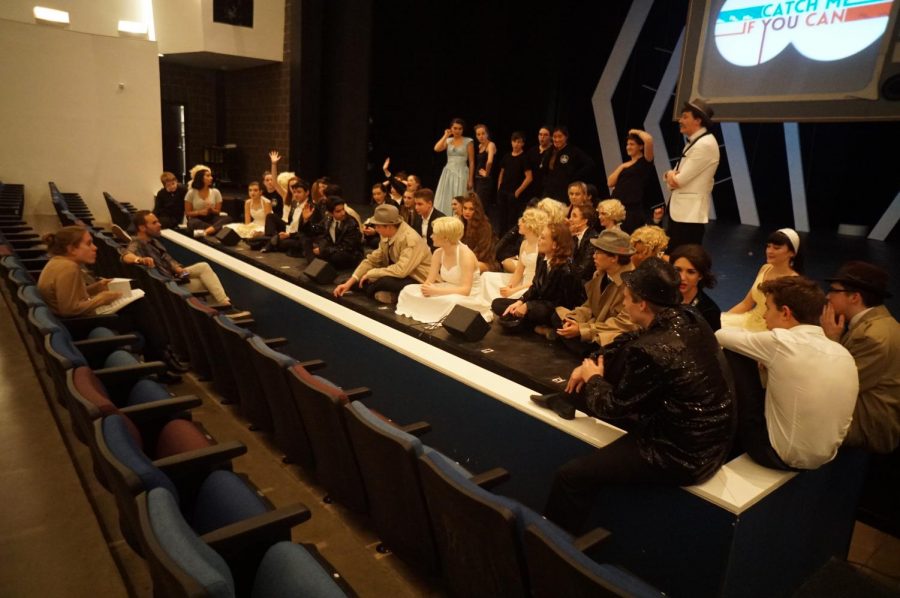
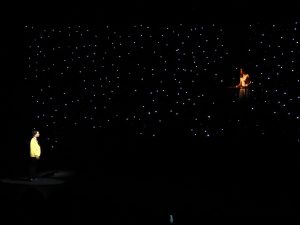

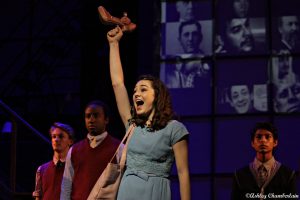


Wyeth Purkiss • Feb 21, 2018 at 2:30 pm
It was a real wonderful interview and perspective from the director and about the cast and working with them overtime and the progression. I would have liked a question or two about the choice and how they chose that play or more questions, because it is the director of the play and the leader in the choices and the roles. There was a lot of great details and wonderful questions, and that;s why these are great interviews, the depth of the questions.